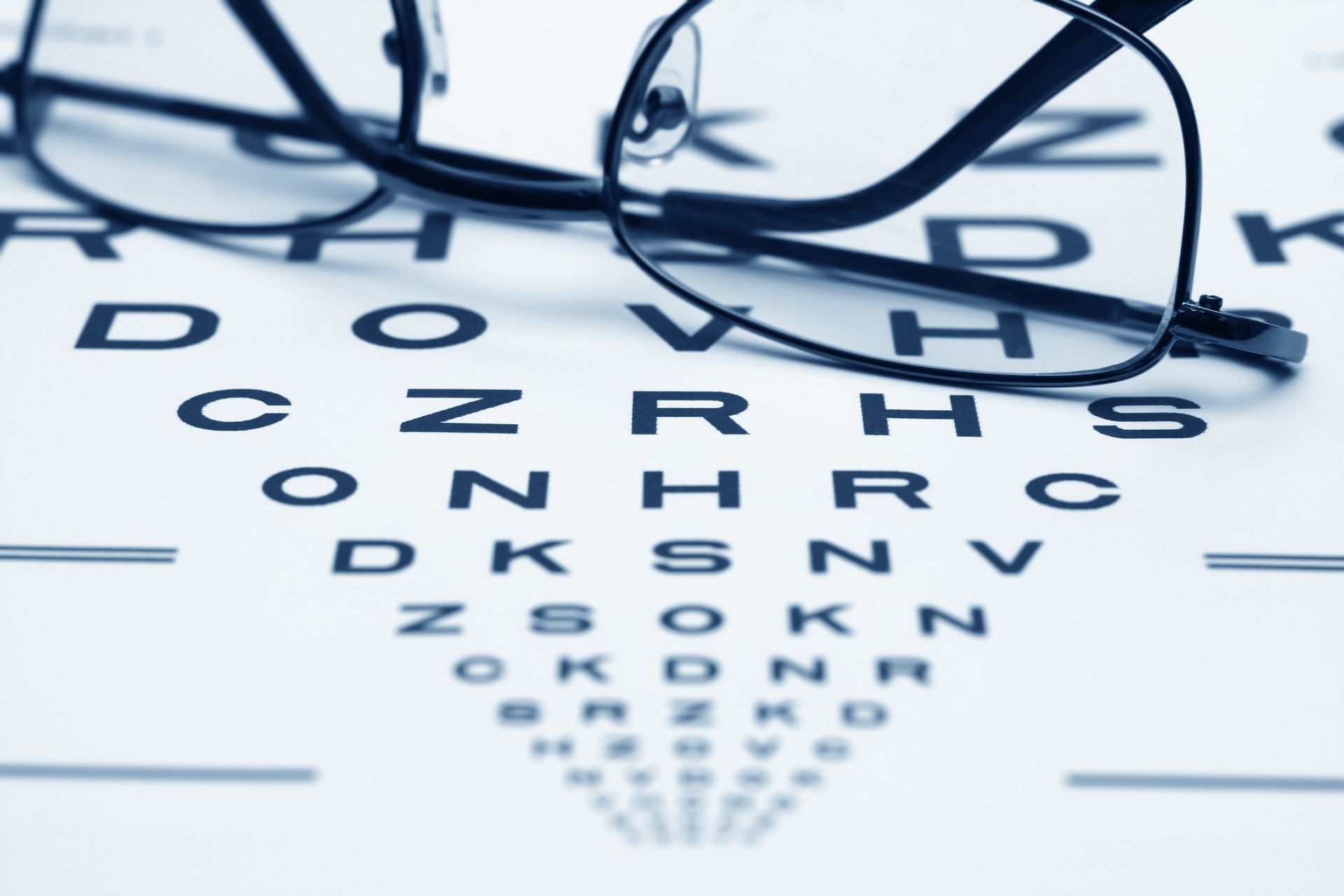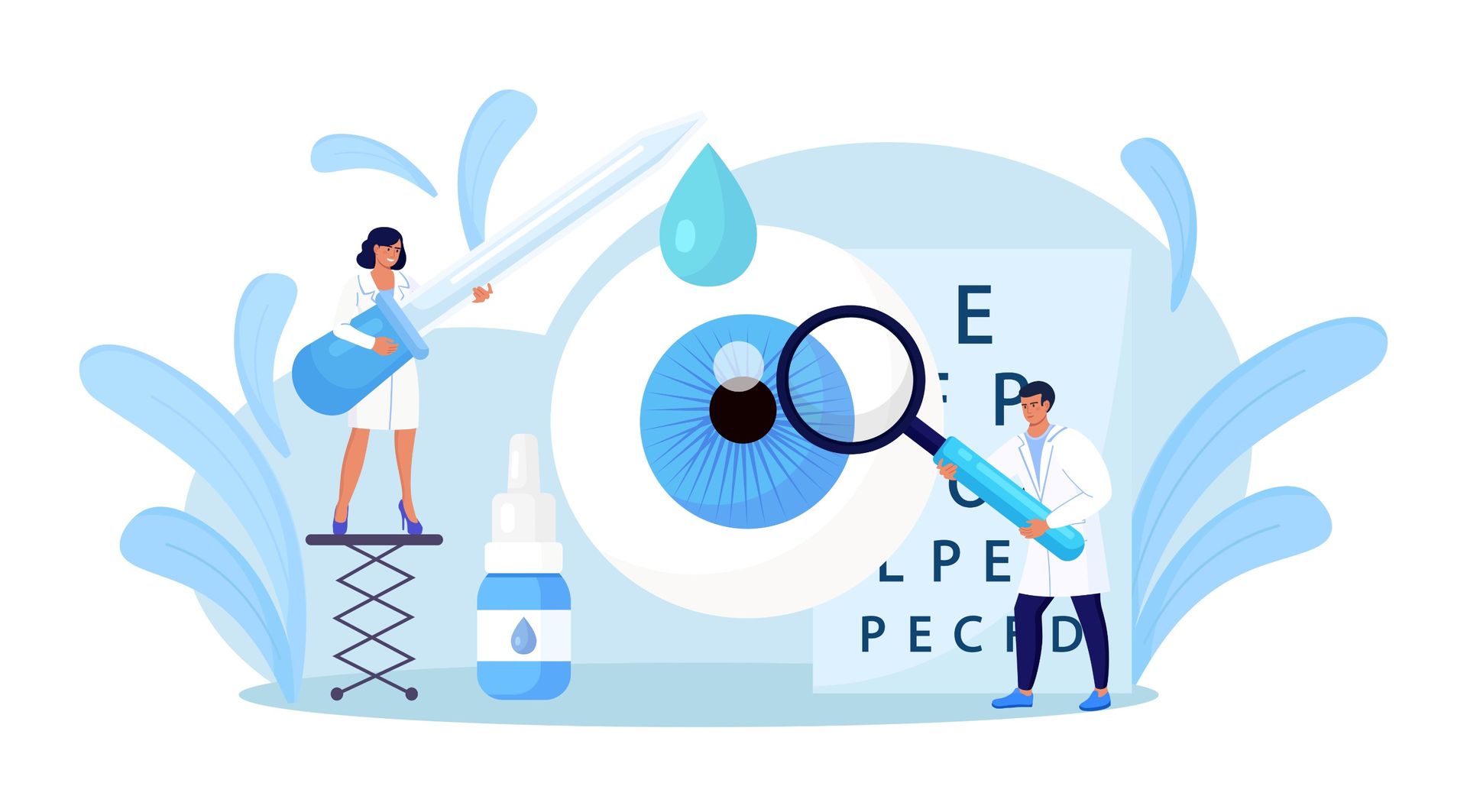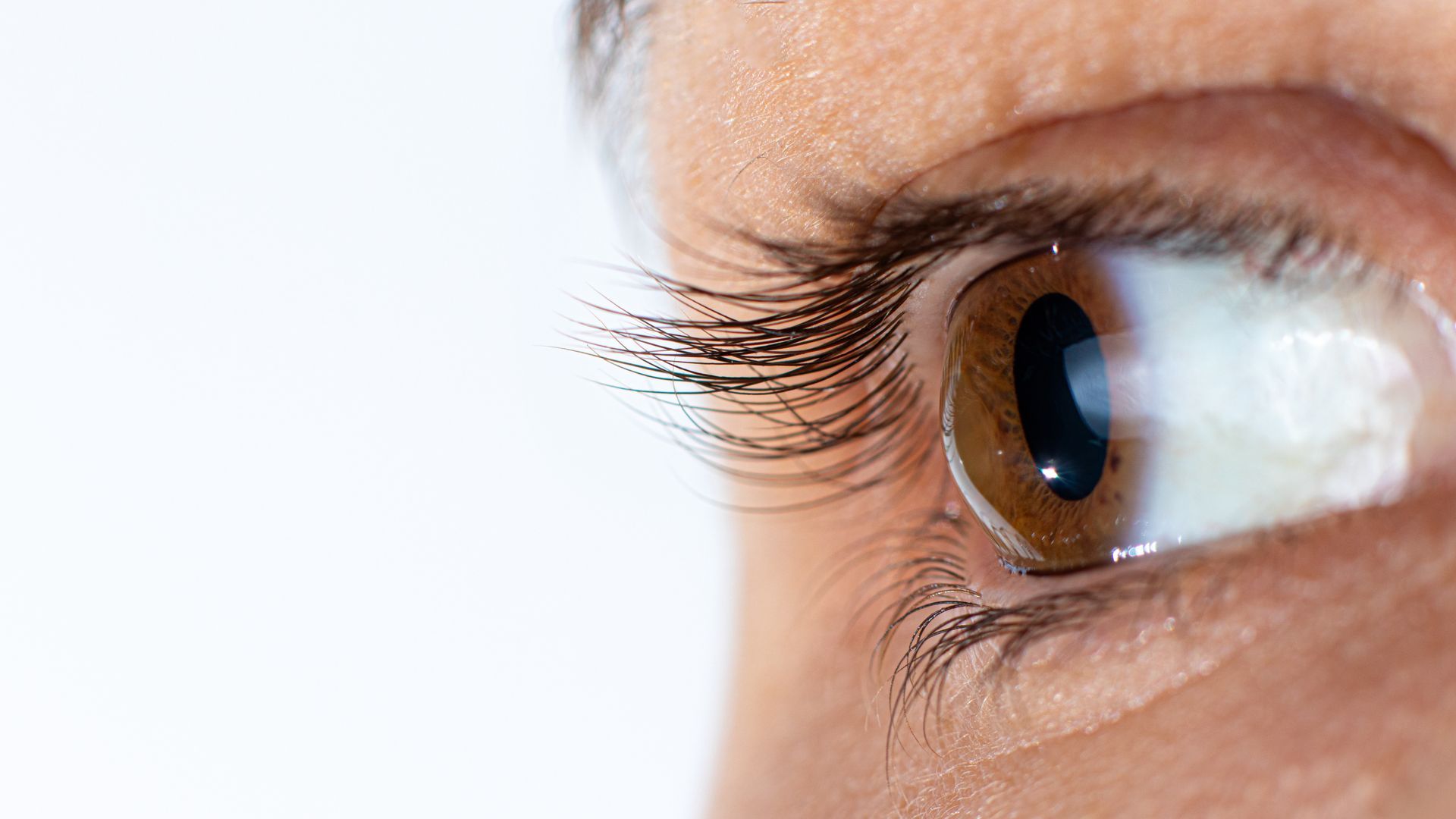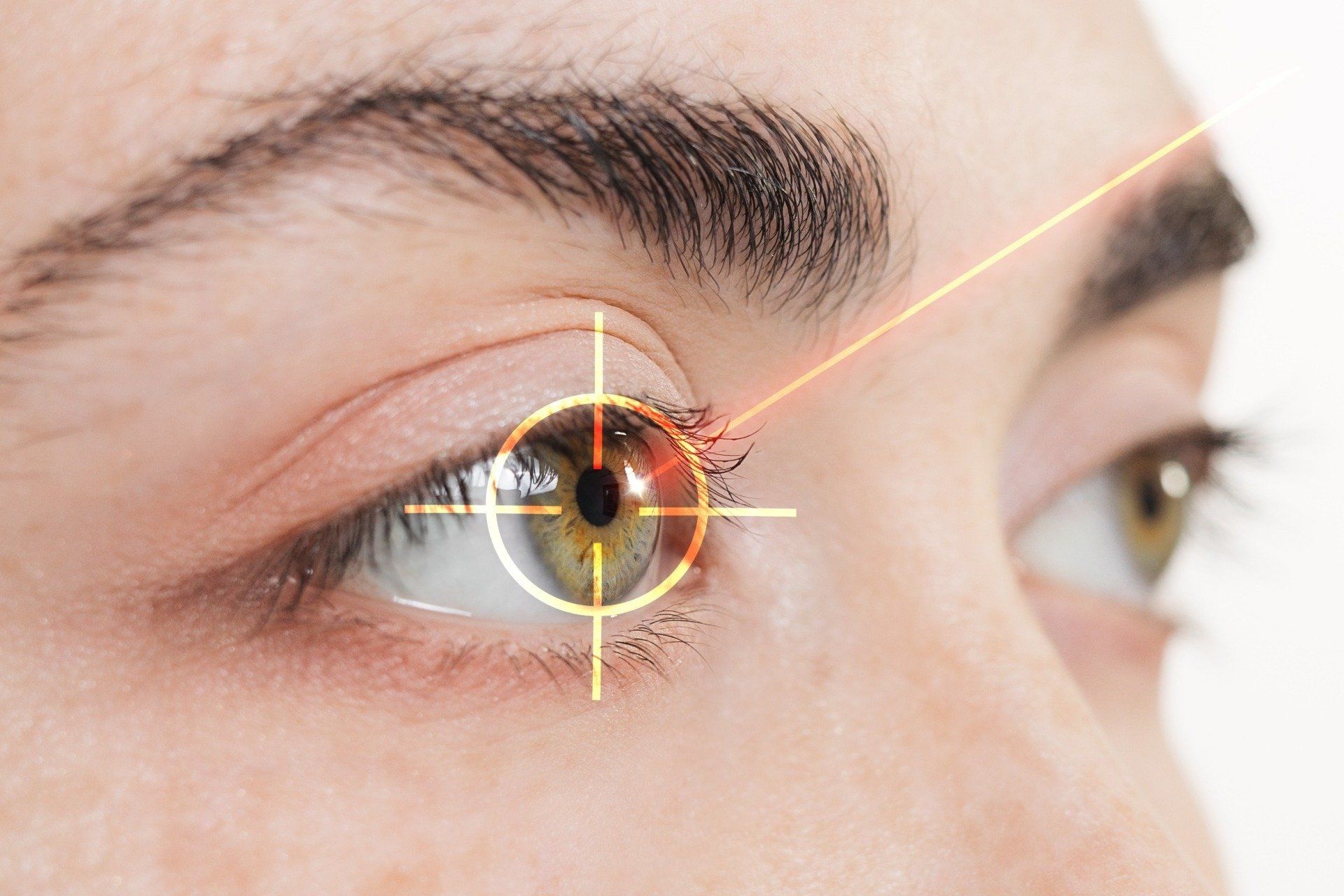Nearsighted vs. Farsighted: What’s the Difference?
The eyes are capable of some fairly remarkable and miraculous things, but much like anything else in life, your two eyes aren’t perfect – by any means. And while there are a wide range of conditions that impact eye health and function, refractive errors are among the most common.
Refractive errors can be grouped into one of three primary categories:
- Nearsightedness (myopia)
- Farsightedness (hyperopia)
- Astigmatism
Though these three conditions are all considered refractive errors, they impact an individual’s ability to see clearly in different ways. For those that want to live a happy, healthy, and rewarding life with normal vision, Holly Springs Eye and Laser can help correct your vision with LASIK surgery.
Understanding the Structure of the Eye
Before we dive into the differences between myopia, hyperopia, and astigmatism, let’s first take a moment to understand the different structures of the eye – including the cornea, iris, pupil, lens, vitreous humor, retina, and optic nerve. They each play an essential role in quality vision.
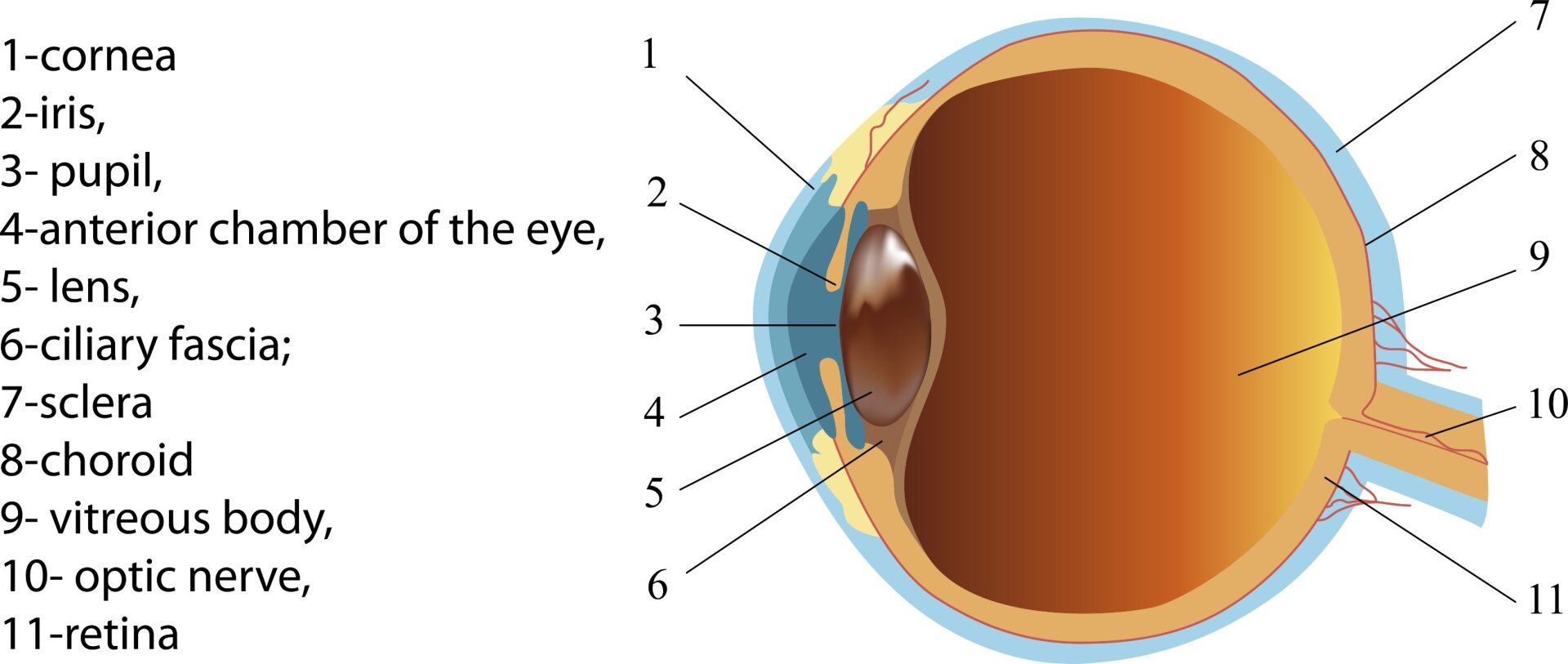
Let’s take a closer look:
- Cornea - the clear, transparent outer layer of the eye, which acts like a ‘window’ into the eye and covers the iris and pupil.
- Iris - the colored part of the eye, which helps control the amount of light waves that enters the eye by dilating and constricting the pupil.
- Pupil - the black, dark part of the eye located in the center of the iris, which works with the iris to control light entering the eye.
- Lens - the clear, crystalline part of the eye that helps bend, refract, and focus light into the eye.
- Vitreous Humor - the clear, gel-like substance that makes up most of the eye, separating the lens from the retina.
- Retina - the thin layer of tissue that lines the back of your eye, which converts the incoming light from the lens into electrical pulses.
- Optic Nerve - the nerve located in the back of the eye, which acts as a messenger between the brain and retina.
- Brain - the optic nerve is connected to the brain, which takes the electrical impulses made by the retina and converts it into an image, which we see.
In regards to a refractive error, vision impairment is generally caused by an abnormally-shaped cornea, which doesn't allow light to focus properly onto the retina . As a result, patients are often diagnosed with either astigmatism, nearsightedness, and farsightedness.
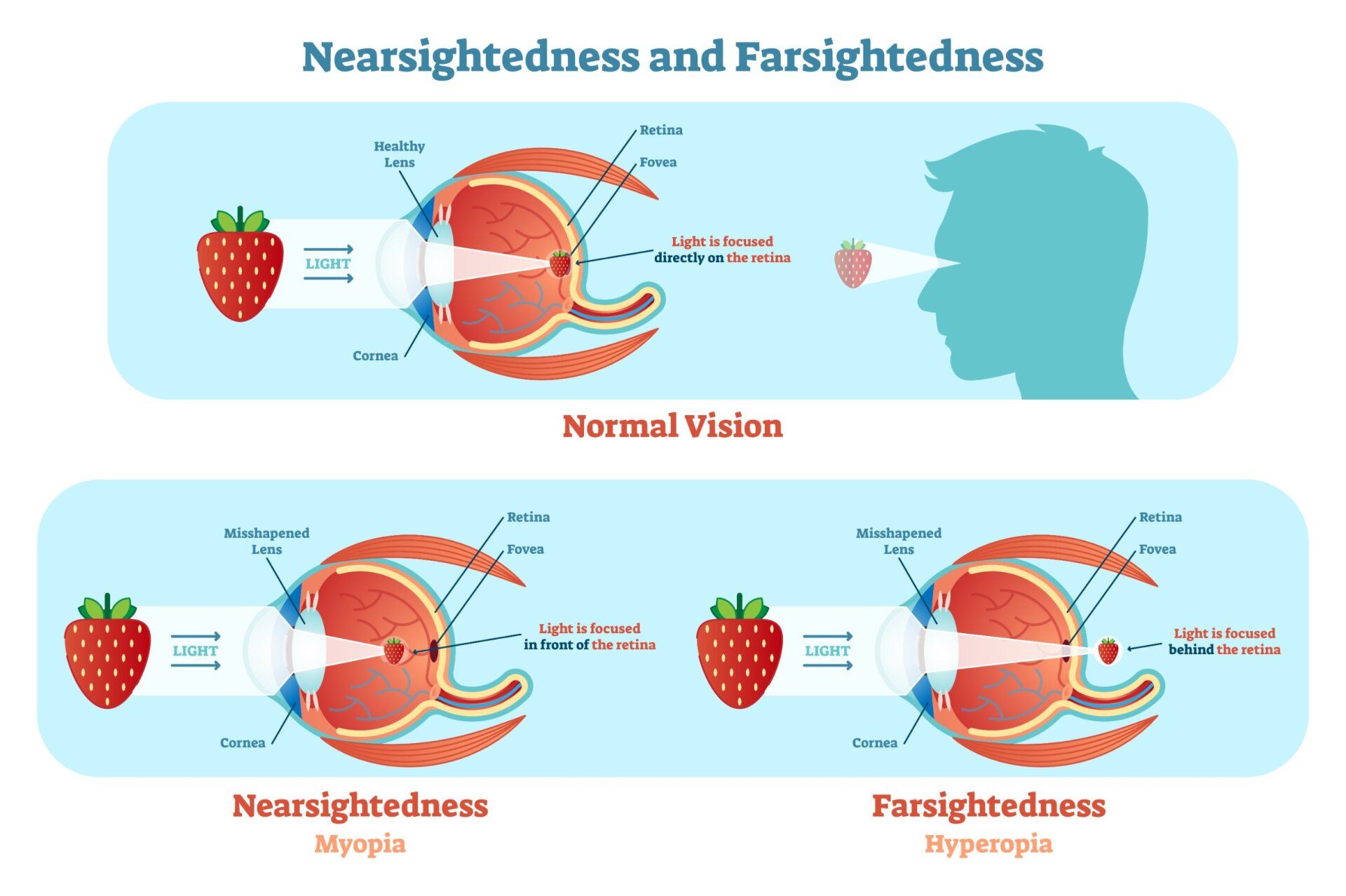
What is Nearsightedness?
Nearsighted vision, also known as myopia, occurs when a patient has blurred vision from a distance, but can see things clearly up close. For example, a nearsighted person might have a hard time reading street signs while driving, but can read a book, magazine, or even a map clearly.
The two primary causes of nearsightedness are a cornea that’s too steeply curved or an eye that’s longer than normal. When this happens, incoming light rays are focused in front of the retina – rather than on the retina. Roughly 42% of all Americans have nearsighted vision.
What is Farsightedness?
Farsighted vision, also known as hyperopia, occurs when a patient can see distant objects clearly, but nearby objects look blurry – it’s the opposite of myopia. For example, a patient might be able to read the food menu behind the cash register, but not the paper menu they hand out.
The two primary causes of farsightedness are a cornea that doesn’t curve enough or an eye that’s shorter than normal. When this happens, incoming light focuses behind the retina – opposed to on the retina. Roughly 5-10% of all Americans suffer from farsighted vision.

What is Astigmatism?
Astigmatism occurs when a patient has difficulty seeing both your distance and near objects – in other words, everything looks blurry. This is caused by an irregularly-shaped eyeball, cornea, and lens. It is possible to be diagnosed with astigmatism, as well as myopia or hyperopia.
Normally, the eyeball is evenly rounded and shaped – a lot like a basketball. With astigmatism, the eyeball is either wider than it is tall (horizontal astigmatism) or taller than it is wide (vertical astigmatism). Either way, light is refracted both in front of and behind the retina, instead of on it.
Diagnosing Myopia, Hyperopia, and Astigmatism
Refractive errors are generally discovered during a comprehensive eye exam with your local eye doctor or ophthalmologist. Most people will benefit from a yearly eye exam to catch vision problems in their earliest stages and prevent them from worsening your vision in the future.
During an eye exam, your eye doctor will:
- Use a variety of diagnostic tools and equipment to measure your vision and determine the need for vision correction.
- Measure eye pressure (also known as intraocular pressure).
- Use numbing drops to dilate the eyes and examine the back of your eye, also known as the retina.
- Use various light and imaging technologies to assess the overall health and function of the eye.
Some of the most common symptoms of a refractive error include blurry vision (distant, near, or both), headaches, eye strain, needing to squint to see clearly, and eye fatigue. If you notice any of these symptoms, don’t hesitate to schedule an appointment at Holly Springs Eye and Laser.
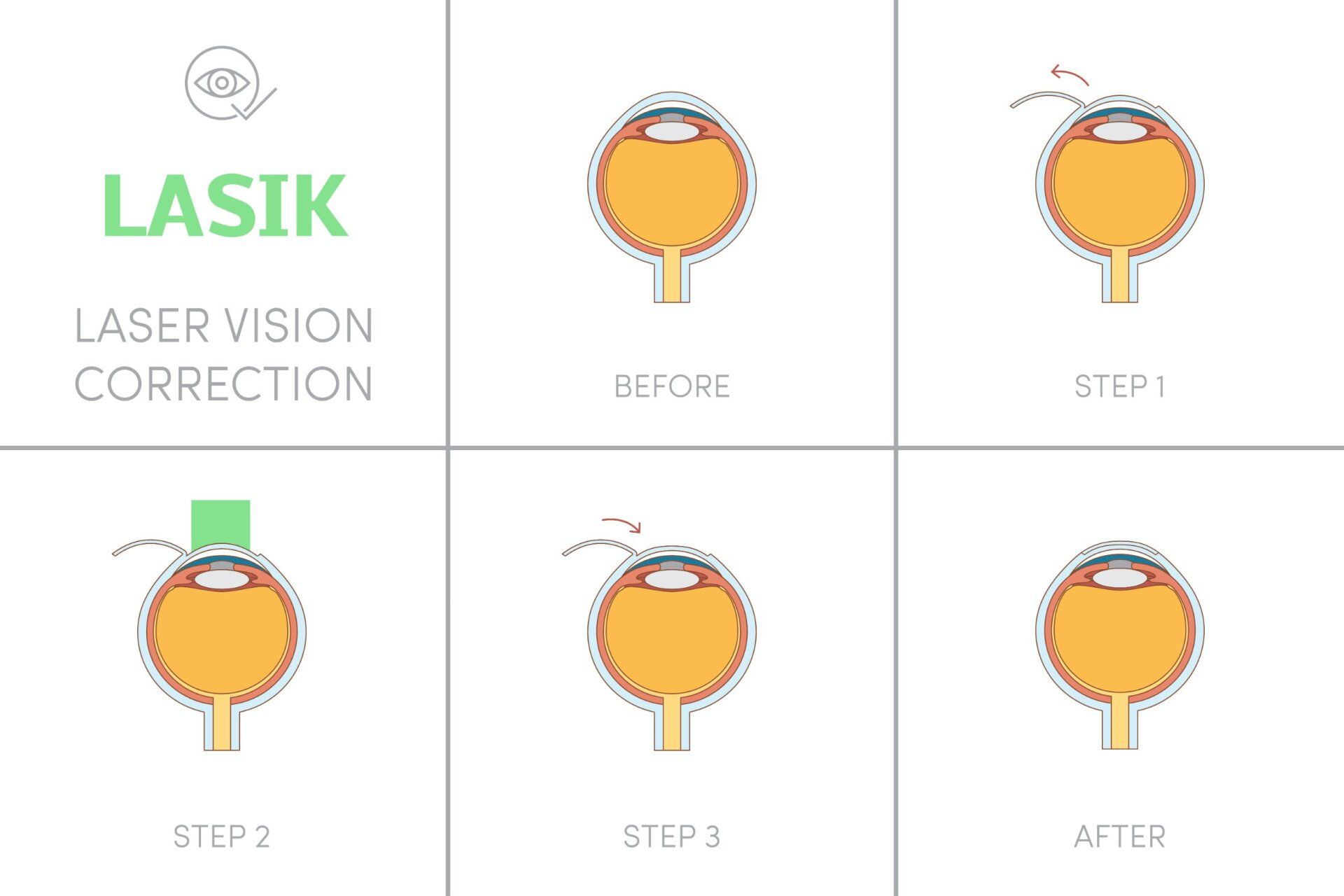
Treating Myopia, Hyperopia, and Astigmatism
There are a number of ways to correct and fix refractive errors of the eye. Perhaps the most traditional way is with corrective lenses – eyeglasses or contact lenses. While they help patients see clearly again, they’re just temporary solutions that fail to address the core of the issue.
If you’re looking for a more permanent (with a few exceptions) solution to clear vision and healthy eyes, you should ask your eye doctor about LASIK eye surgery. Also known as laser-assisted in situ keratomileusis, LASIK is a form of laser eye surgery that corrects the corneal shape.
Contact Holly Springs Eye and Laser Today!
Are you noticing symptoms of nearsightedness, farsightedness, or astigmatism? Are you worried that your eye health and function is worsening? Do you want to see if you’re a quality candidate for LASIK surgery or vision correction? Are you ready to schedule an appointment?
If you answered ‘yes’ to any of the questions above, then we’re ready to help. At Holly Springs Eye and Laser, we take pride in our tailored and personalized approach to eye care. We aim to leave each patient empowered and educated on their eye health, allowing for improved vision.
Don’t hesitate to contact us today to schedule an appointment with Dr. Faraaz Khan. You can call or text us at 919-689-8920, email us at hello@hollyspringseyeandlaser.com, or fill out our online form. We can’t wait to meet you and look forward to helping you achieve clearer vision!





